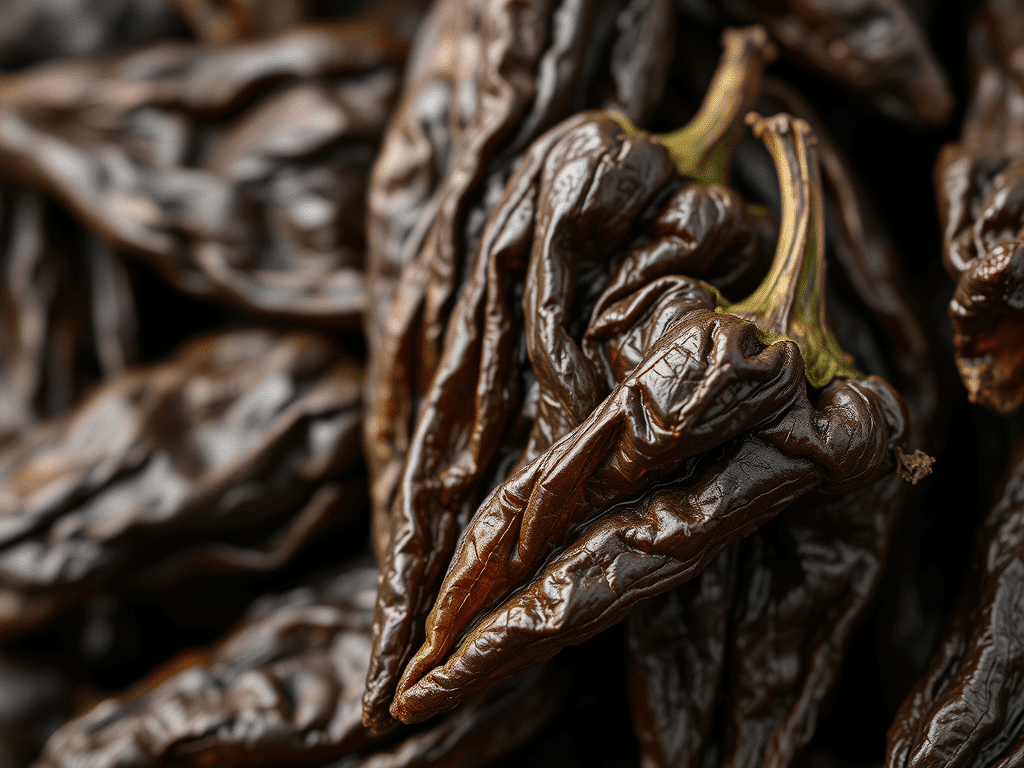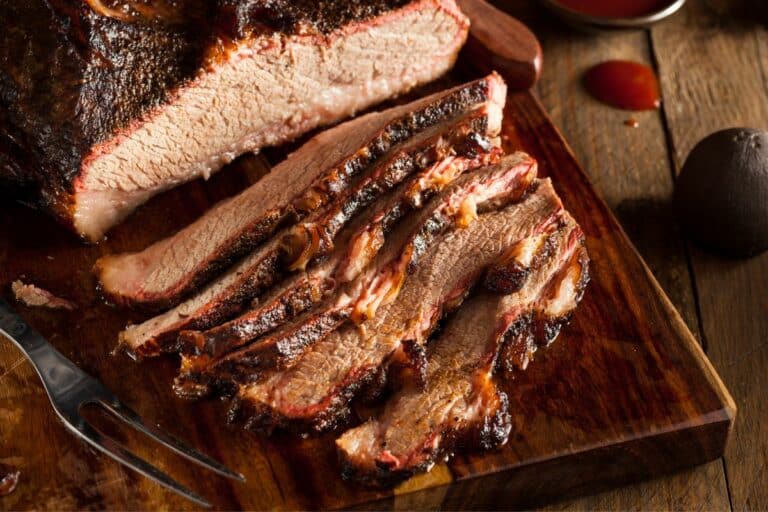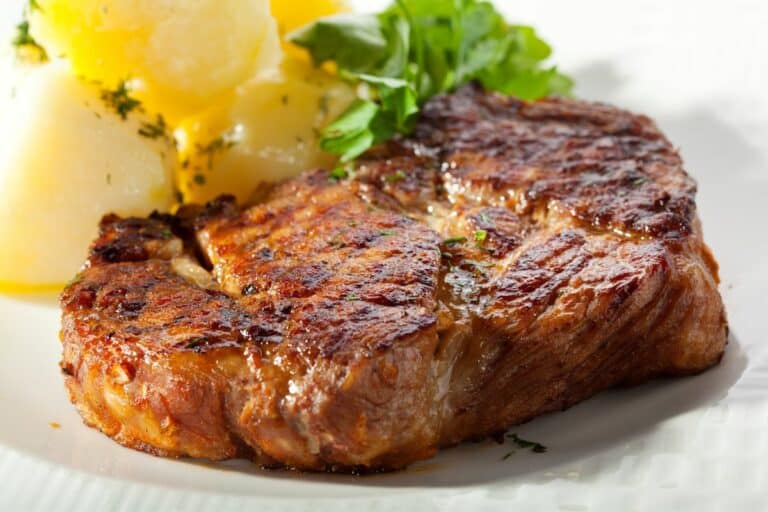Pasilla vs Poblano Peppers Master Mexico’s Flavor Champions
Mistaking pasilla vs poblano peppers? Discover their unique flavors, cooking uses, and key differences with tropical-inspired recipes.
Transparency Notice: This article contains affiliate links. Purchases made through them help fund our family’s recipe testing and travels—always at no extra cost to you. We only recommend products we personally use and trust. Learn more about our disclosure policy.
Pasilla vs Poblano at a Glance
Mistaking pasilla vs poblano peppers? You’re definitely not alone—these magnificent Mexican gems often get swapped in recipes and markets, but they’re actually worlds apart in terms of flavor, appearance, and culinary applications! At Mangoes and Palm Trees, we’re unraveling their delicious secrets with our signature tropical twist—think smoky salsa fresca that dances on your palate or perfectly stuffed delights that bring restaurant-quality Mexican cuisine right to your home kitchen.
Ready to dive deep into their distinctive flavors, versatile cooking uses, and key identifying differences that will transform you from confused cook to confident pepper expert? Your kitchen’s about to get significantly spicier with authentic Mexican flair that celebrates both tradition and innovation!
Pasilla and poblano peppers are true flavor powerhouses that each shine brilliantly in traditional Mexican cuisine with completely distinct vibes and culinary personalities. Confused by their sometimes overlapping names and similar heat levels? We’ve got you completely covered—five amazing differences, professional-quality recipes, and insider tips await you below, plus you can snag additional pepper wisdom from Serious Eats’ comprehensive Pepper Primer.
Whether you’re a seasoned Mexican cuisine enthusiast or just beginning your spicy journey, this comprehensive guide will equip you with everything you need to master these incredible peppers. Let’s spice it up and explore the wonderful world of authentic Mexican flavor! Craving even more pepper knowledge? Don’t miss our detailed Arbol Chili Guide!
🌶️ Join Our Spicy Pepper Community!
🌶️ Instant pepper collection delivery + weekly spicy tips. Unsubscribe anytime. Read our Privacy Policy.
What Is a Pasilla Pepper? Meet the “Little Raisin”
Pasilla peppers, affectionately known as “little raisins” due to their distinctive wrinkled appearance and concentrated sweetness, are actually dried chilaca peppers that originate from the rich culinary traditions of Mexico. These remarkable peppers are absolutely prized throughout Mexican cuisine for their incredible smoky depth and complex flavor profile that elevates dishes like traditional mole negro to extraordinary heights of deliciousness.
Slender, elegant, and beautifully dark with their characteristic wrinkled skin, pasilla peppers are an absolute kitchen must-have for any serious cook who wants to bring authentic Mexican flavors to their home cooking repertoire.

Pasilla peppers—wrinkled, smoky, and rich!
Complete Pasilla Pepper Profile
🍇 Flavor Profile
Rich, smoky, and naturally sweet with distinctive raisin and dark cocoa undertones that add incredible complexity to sauces and moles.
👀 Physical Appearance
Long, thin, and elegantly slender with dark brown-black wrinkled skin, typically measuring 6-8 inches in length when fully dried.
🔥 Heat Level
Pleasantly mild heat ranging from 1,000-2,500 SHU—significantly gentler than jalapeños while still providing warmth.
For comprehensive heat scale comparisons and detailed pepper information, explore PepperScale’s detailed Pasilla Guide that provides expert insights into this remarkable chili variety.
What Is a Poblano Pepper? Puebla’s Pride
Poblano peppers proudly hail from the beautiful city of Puebla, Mexico, where they’ve been beloved for generations for their wonderfully mild, earthy taste that makes them absolutely perfect for stuffing with delicious fillings or roasting to bring out their natural sweetness. Fresh and vibrantly green when harvested, these versatile peppers transform into ancho chiles when dried, offering cooks two distinct flavor profiles from the same amazing pepper variety.

Pasilla vs poblano—side-by-side flavor stars!
Complete Poblano Pepper Profile
🌿 Flavor Profile
Mild, earthy, and pleasantly vegetal with beautiful smoky-sweet notes that emerge when roasted or charred over open flames.
👀 Physical Appearance
Wide, broad, and distinctly heart-shaped with glossy dark green skin, typically measuring 4-6 inches in length with thick, meaty walls.
🔥 Heat Level
Beautifully subtle heat ranging from 1,000-2,000 SHU—perfectly tame and accessible for all spice tolerance levels.
For more detailed information about poblano peppers and their culinary applications, be sure to explore our comprehensive Poblano Chile Guide that covers everything from selection to preparation techniques.
5 Key Differences: Pasilla vs Poblano Showdown
Here’s the ultimate spicy showdown that will finally settle the confusion—five definitive ways that pasilla and poblano peppers differ from each other, ensuring you’ll never mix them up again!
1. Shape & Size Differences
Pasillas: Long, slender, and elegant—perfect for grinding into powders
Poblanos: Broad, wide, and stout with thick walls—ideal for stuffing with cheese or meat fillings
2. Color Characteristics
Pasillas: Deep, dark brown-black when dried with distinctive wrinkled texture
Poblanos: Vibrant dark green when fresh, ripening to beautiful red when mature
3. Taste & Flavor Notes
Pasillas: Sweet raisin and cocoa notes with deep, complex smokiness
Poblanos: Mild earthy depth with vegetal freshness—both are wonderfully smoky when roasted!
4. Form & Preparation
Pasillas: Always used dried—must be rehydrated for most applications
Poblanos: Primarily used fresh, though they become ancho chiles when dried
5. Culinary Applications
Pasillas: Excel in complex sauces, moles, and traditional Mexican stews
Poblanos: Perfect for stuffing, quesadillas, and roasted dishes
For additional visual comparisons and expert insights into pepper identification, check out Bon Appétit’s comprehensive Pepper Breakdown for professional kitchen guidance.
Cooking with Pasilla Peppers: Smoky Complexity
Smoky Pasilla Mole Sauce: Tropical Richness
This incredibly rich and tropical-inspired mole sauce showcases pasilla peppers at their absolute finest—perfect for elevating enchiladas, roasted chicken, or grilled vegetables to restaurant-quality status!

Pasilla mole sauce—smoky richness in a bowl!
Complete Ingredient List
Step-by-Step Instructions
- Toast the Pasillas: Heat a dry skillet over medium heat and toast pasilla peppers for 30 seconds until beautifully fragrant and aromatic.
- Rehydrate: Soak toasted peppers in hot water for 15 minutes until completely softened and pliable.
- Blend Smooth: Blend rehydrated peppers with broth, onion, garlic, cocoa powder, and cumin until completely smooth and velvety.
- Simmer and Season: Heat oil in a saucepan, add the blended mixture, and simmer for 15-20 minutes. Season with salt to taste and serve warm over your favorite dishes.
🌮 Perfect for: Enchiladas, grilled chicken, roasted vegetables, or as a base for complex Mexican stews
For professional mole-making tips and traditional techniques, visit The Kitchn’s comprehensive Mole Guide for expert guidance.
Cooking with Poblano Peppers: Mild Excellence
Classic Chile Relleno: Smoky, Cheesy Perfection
This traditional Mexican masterpiece showcases poblano peppers in all their glory—smoky, cheesy, and absolutely divine with that perfect balance of crispy exterior and molten interior that defines authentic Mexican cuisine!

Chile relleno—poblano perfection, fried and stuffed!
Complete Ingredient List
Step-by-Step Instructions
- Roast the Poblanos: Char poblanos over open flame or under broiler until skin is completely blackened. Steam in a plastic bag for 10 minutes, then carefully peel away charred skin and remove seeds.
- Stuff with Cheese: Carefully stuff each roasted poblano with shredded cheese, ensuring not to tear the pepper walls. Seal the opening carefully.
- Create Light Batter: Whip egg whites to soft peaks, then gently fold in beaten egg yolks to create an incredibly light and airy batter.
- Coat and Fry: Dust stuffed poblanos with flour, dip in egg batter, and fry in 350°F oil until golden brown and crispy. Drain on paper towels and season with salt immediately.
🧀 Perfect Serving Suggestion: Serve immediately with warm tortillas, Mexican rice, and your favorite salsa for an authentic Mexican feast
For professional frying techniques and temperature control tips, see Epicurious’ detailed Relleno Guide for restaurant-quality results at home.
Rate Our Pepper Guide
Did our comprehensive pasilla vs poblano guide help you master these amazing Mexican peppers? We’d love to hear which pepper became your new favorite! Rate this guide and share photos of your delicious creations with #MangoesPalmTrees!
Click a star to rate (1-5 stars)
Which Pepper Do You Prefer?
Pasilla Poblano Both Equally Still Learning
Vote and share your choice on X with #MangoesPalmTrees!
About the Author
Oliver Mayerhoffer brings decades of professional culinary experience and passionate dedication to Mexican cuisine, specializing in authentic pepper varieties and traditional cooking techniques learned during extensive travels throughout Mexico. Having personally sourced peppers from traditional markets in Oaxaca, Puebla, and Veracruz, he possesses deep understanding of regional pepper variations, proper identification techniques, and the cultural significance these chiles hold in authentic Mexican cooking traditions. Together with Natalia and Victor, he meticulously tests every pepper recipe and identification technique in their family kitchen, ensuring each guide delivers accurate information that home cooks can confidently use to create restaurant-quality Mexican dishes. From bustling mercados in Mexico City to family kitchens in remote villages, Oliver’s extensive travels and cultural immersion inform his approach to teaching pepper mastery that honors traditional Mexican culinary wisdom while making these incredible flavors accessible to home cooks worldwide.
Wrap-Up: Master the Pepper Difference
Pasilla vs poblano—two magnificent Mexican pepper stars, each with completely unique flair and culinary personality that brings distinctive character to authentic Mexican cooking! Pasillas bring deep, complex smoky sweetness that’s absolutely perfect for rich moles and traditional sauces, while poblanos shine brilliantly in cheesy rellenos and stuffed pepper creations that showcase their mild, earthy flavor.
Now that you’ve mastered their key differences—distinctive shape variations, color characteristics, and unique taste profiles—you’re fully equipped to spice up your dishes with that signature Mangoes and Palm Trees tropical zest that celebrates both traditional Mexican flavors and innovative fusion cooking!
Ready to expand your pepper repertoire even further? Don’t miss our comprehensive Ultimate Guide to Guajillo Sauce for your next spicy adventure—your kitchen is definitely ready for a festive Mexican fiesta!
Whether you’re preparing traditional mole negro with pasillas or creating perfect chile rellenos with poblanos, these incredible peppers will transform your cooking from ordinary to extraordinary. The beauty of Mexican cuisine lies in understanding these subtle differences that create layers of complex, authentic flavor.
Keep exploring, keep cooking, and remember—every great Mexican dish starts with choosing the right pepper for the job. Your taste buds (and your dinner guests) will thank you for the delicious journey into authentic Mexican flavors!
For comprehensive chili pepper knowledge and additional variety guides, explore Food Network’s complete Pepper Guide to continue your spicy education!








